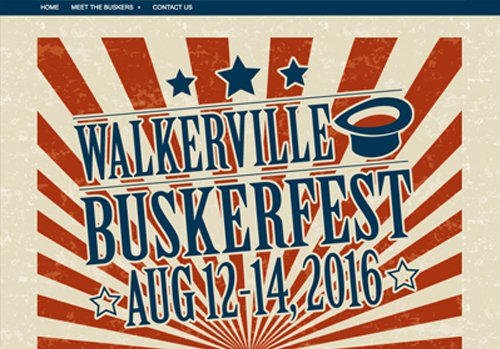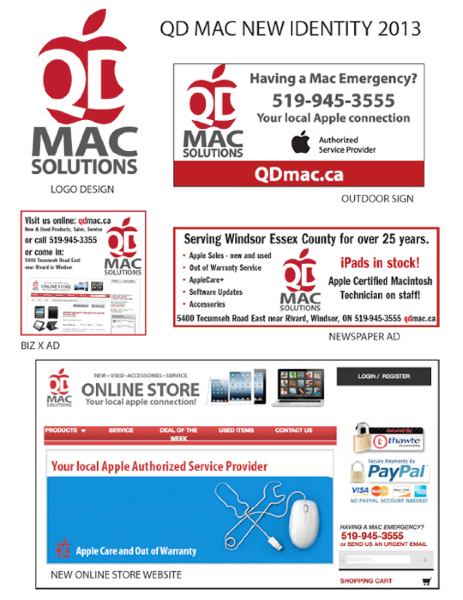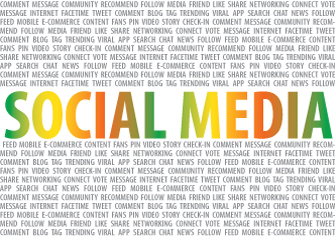Algorithm
A set of mathematical rules that search engines use to rank the search results based on keywords. Companies such as Google or Yahoo change their search algorithms to stop spam websites and to aid in their online ad purchases.
Ascender
An extender on a letter that appears above the midline (FYI – below the midline is a descender)
ASCII – American Standard Code for Information Interchange (pronounced ass-key)
The worldwide standard for the code numbers used by computers to represent all the uppercase and lowercase Latin letters, numbers, punctuation, and other symbols. There are 128 standard ASCII codes, each of which can be represented by a 7 digit binary number: 0000000 through 1111111. In the online world, ASCII is also used to describe files that are stored in plain text format. (https://www.netlingo.com/word/ascii.php#sthash.Mb88R335.dpuf)
Baseline
The invisible line on which all of a typeface’s letters sit.
BPS – Bits Per Second (bit/sec)
A common measure of data speed for computer modems and transmission carriers. The speed in BPS is equal to the number of bits transmitted or received each second. Internet companies show download speed by Mbps which are megabits per second, offering anywhere from 6 to 120 Mbps.
Cloud
Cloud file backup – usually refers to a server used to back up and share files. It can be a WAN (wide area network) like the internet, or a LAN (local area network), a private area within a company.
Cloud computing – hardware and software used to process data over the internet.
CMYK
Stands for Cyan, Magenta, Yellow, and Black (yes, K is black so it’s not confused with Blue). This set of colours is used in printing colour pages because of the way paper absorbs light.
Domain Name
The unique name for a website which appears in the browser address bar
DPI – Dots Per Inch
Similar to the pixel for the web, dots are the smallest unit of measurement when printing digital images. DPI refers to the resolution of a printed digital object.
Dropbox – file sharing online
Dropbox (dropbox.com) is a file hosting service used to share files over the internet, similar to cloud sharing. Dropbox allows users to create a special folder on each of their computers, which Dropbox then synchronizes so that it appears to be the same folder (with the same contents) regardless of which computer is used to view it. Files placed in this folder also are accessible through a website and mobile phone applications. The fee is about $17 a month. (https://en.wikipedia.org/wiki/Dropbox_%28service%29)
Encryption
Encryption is the mathematical scrambling of data so that it is hidden from eavesdroppers. It’s used on secure sites using SSL (see below) for e-commerce.
EPS – Encapsulated PostScript
A file format used for vector images that contain both text and graphics.
FTP – File Transfer Protocol
Computers and servers transfer information using file transfer protocol software. Two common programs are Fetch and FileZilla.
GIF – Graphics Interchange Format
Pronounced jif (like the peanut butter), this image file format is best used for small image files with few colours and designs. Bonus: you can make GIFs animated!
HTML – Hypertext Markup Language
The computer language used to display content online like text, images, and links on the web.
IP Address – internet protocol address
Your computer’s ‘internet protocol’ address is a four-part or eight-part electronic serial number. An IP address can look something like ‘202.6.102.55’. Every computer, cell phone, and device that accesses the internet is assigned at least one IP address for tracking purposes (like a licence number)
JPEG – Joint Photographic Experts Group
An image file type that uses lossy compression, with little perception in a loss of quality. This type of file is best used for photographs. (for line art, PNG is best)
K or KB – kilobyte
A unit of measurement equivalent to one thousand bytes of computer memory or disk capacity. For example, a file size of 200K is approximately 200,000 bytes (or characters).
Kerning
The space between individual letters in a word in print.
LAN – Local Area Network
A network connecting computers in a relatively small area, such as an office, usually connected through a telephone line. Each computer connected to a LAN is called a node.
Leading
The space between lines of type in print.
Megabyte – MB
One megabyte is about a million bytes (K stands for a thousand)
Name Server
A name server translates domain names into IP addresses. They typical start with ns1. and ns2. The name server works behind the scenes when you enter a URL (see below)
Open Source
A program’s source code is freely available to the public, unlink commercial software.
PDF – Portable Document Format
A file format best used to represent documents and presentations. A PDF can be opened in multiple software programs.
QUERTY keyboard
refers to the first six letters of hte left top row of the original typewriter keys.
Query
A question or request to find a particular website using a search engine (such as Google) or a file in a database (like an online directory). You may have seen ‘nothing found matching your query‘ on your screen.
Robot (or bot)
A type of artificial intelligence, sometimes called a spider, automated programs used in several online functions such as searching for keywords and discovers new and updated web pages. This is why websites need to keep adding content, helping with search rankings.
RSS – Rich Site Summary
An XML format for sharing content among different web sites such as news items. Users can subscribe to an RSS feed and receive current information daily.
SSL – Secure Sockets Layer
is a commonly-used protocol for managing the security of a message transmission on the Internet. When using secure pages, the URL should start with https instead of http
Tag Cloud (or word cloud)
A visual display or words using a website’s content with font size representing the use of certain keywords. The bigger the word, the more it’s used on the website.
URL – Uniform Resource Locator
A URL is the address (domain name) of a specific web site or file on the Internet. It can have no blanks and is not case sensitive. Website addresses all begin with https:// and some have www. and some don’t. FTP sites start with ftp.
Vector
An illustration created on mathematical calculations. (most obviously line art) There are no dots as there are in images. Vector graphics are created with design programs such as Adobe Illustrator.
Vlog
Vlog is short for “video blog”, a web log which includes video clips.
WHOIS – (pronounced who is)
A free web-based utility used to look up domain names and ownership info from InterNIC, (Internet Network Information Center) a company which catalogues domain information worldwide.
Worm
Typically heard as a type of computer virus.
(WORM can also mean “Write Once, Read Many” used in optical storage technology)
XML – Extensible Markup Language
Used to define documents with a standard format, accessed when a Web page loads.
YouTube
A free, open source video sharing service that allows users to watch videos posted by other users.
ZIP file
A compressed file or folder used to transfer information electronically. (file extension – ends with .zip)


 At ineedwebdesign.ca, we can help your small business think big by creating a professional, creative website at a reasonable price, from a basic five-page site to a full animated site with a content management system. Want to sell online? We can do that too...
At ineedwebdesign.ca, we can help your small business think big by creating a professional, creative website at a reasonable price, from a basic five-page site to a full animated site with a content management system. Want to sell online? We can do that too...  We offer original, creative design services produced with Adobe Creative Suite programs.
Materials include: logos, original vector art, print ads, magazines, brochures, newsletters and online ad materials.
Estimates by the job available.
We offer original, creative design services produced with Adobe Creative Suite programs.
Materials include: logos, original vector art, print ads, magazines, brochures, newsletters and online ad materials.
Estimates by the job available. Platforms like blogging, Facebook, Twitter and mobile are changing the way people connect — and the way businesses promote!
We at ineedwebdesign.ca have the know-how to help your business get found online by people who are ready to buy. We’ll create multiple external links to help with organic search engines. We’ll help you start up an inbound marketing campaign to complement your existing traditional advertising.
Platforms like blogging, Facebook, Twitter and mobile are changing the way people connect — and the way businesses promote!
We at ineedwebdesign.ca have the know-how to help your business get found online by people who are ready to buy. We’ll create multiple external links to help with organic search engines. We’ll help you start up an inbound marketing campaign to complement your existing traditional advertising.